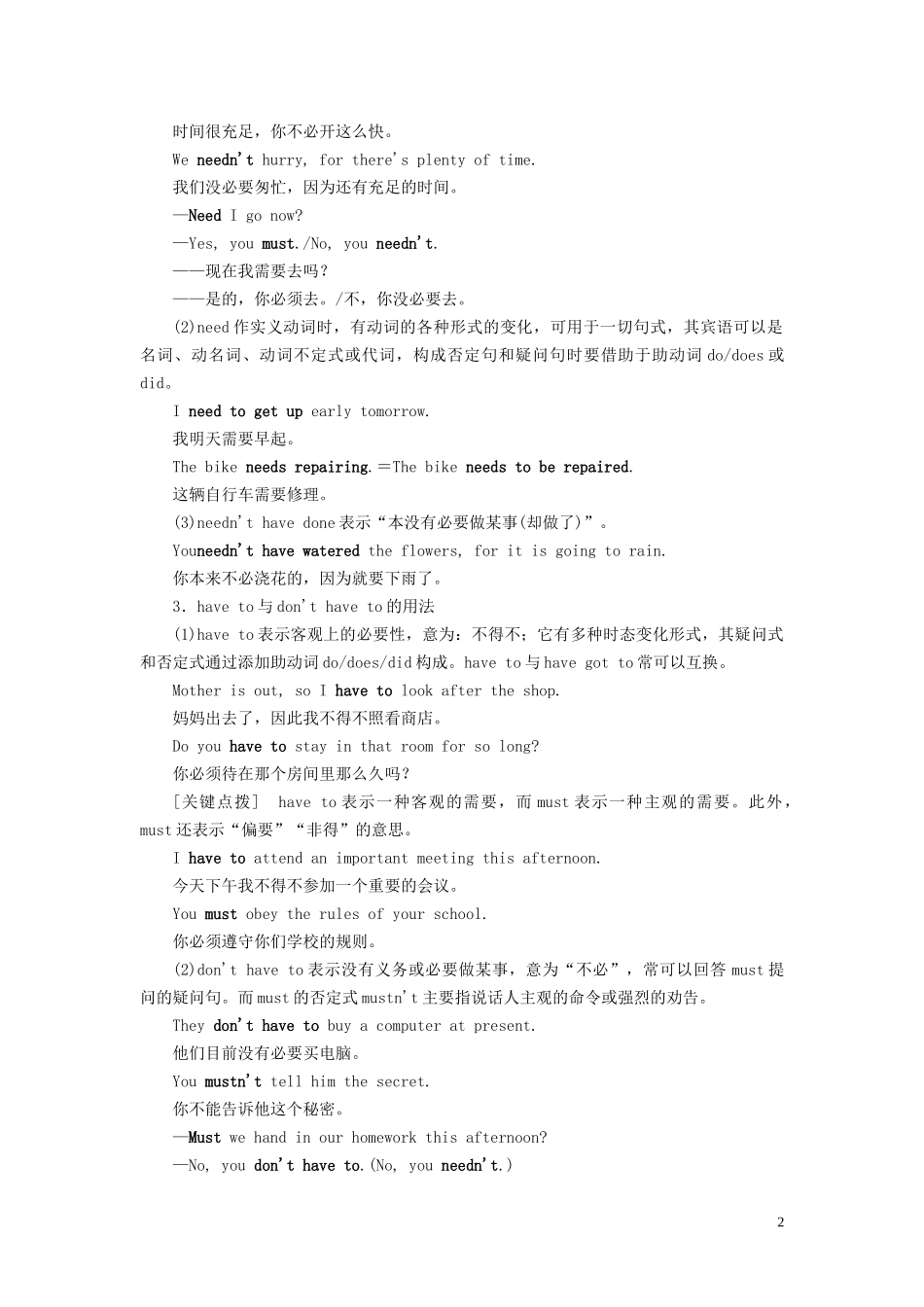Part Ⅲ Grammar & WritingGrammar——情态动词(Ⅱ)一、概念情态动词本身有一定的词义,表示说话人的某种感情或语气,对某一动作或状态的某种态度,表示“可以”“需要”“应该”等意义。二、基本用法1.ought to 与 ought not to 的用法(1)ought to“应当,应该”,其后必须跟动词原形。只有一种形式,没有人称和时态变化。它可以表示“有义务或责任”做某事,语气比较强,也可以表示“建议或劝告”,还可以表示“猜测;期望”等。We ought to protect wild animals from being hunted.我们应该保护野生动物免受猎杀。You ought to work harder than your brother.你应该比你哥哥学习更努力。That ought to be enough food for all of us.那些食物应该够我们吃的吧。(2)ought to 的否定形式为 ought not to 或 oughtn't to,其一般疑问句形式是将ought 置于主语前。You ought not to/oughtn't to be late for such an important meeting.如此重要的会议,你不应该迟到。Ought I to hand in my composition now?我应该现在交上作文吗?[关键点拨] should 与 ought to 表示“应该”时的区别:should 表示自己的主观看法,而 ought to 语气重,含有“按道理应该……”之意;如要反映客观情况或涉及法律义务和规定时一般用 ought to。You should help them with their study.你应该帮助他们学习。You are his father. You ought to help him to get a good education.你是他的父亲,你应该帮助他得到好的教育。2.need 与 needn't 的用法need 意为:需要,既可以作情态动词,也可以作实义动词,但是它们的用法不同。(1)need 作情态动词时:没有人称和数的变化;后接动词原形;常用于否定句或疑问句中;否定式为 need not/needn't。There's plenty of time. You needn't drive so fast.1时间很充足,你不必开这么快。We needn't hurry, for there's plenty of time.我们没必要匆忙,因为还有充足的时间。—Need I go now?—Yes, you must./No, you needn't.——现在我需要去吗?——是的,你必须去。/不,你没必要去。(2)need 作实义动词时,有动词的各种形式的变化,可用于一切句式,其宾语可以是名词、动名词、动词不定式或代词,构成否定句和疑问句时要借助于助动词 do/does 或did。I need to get up early to...


